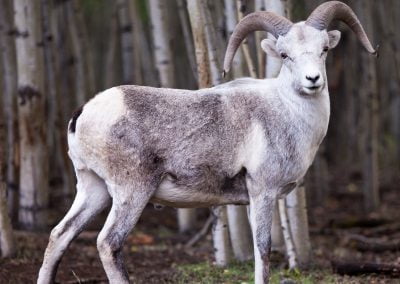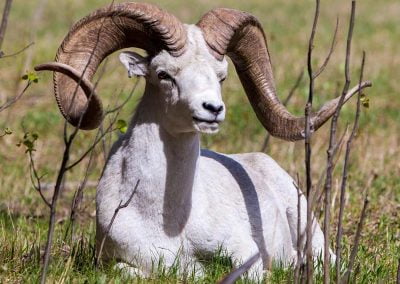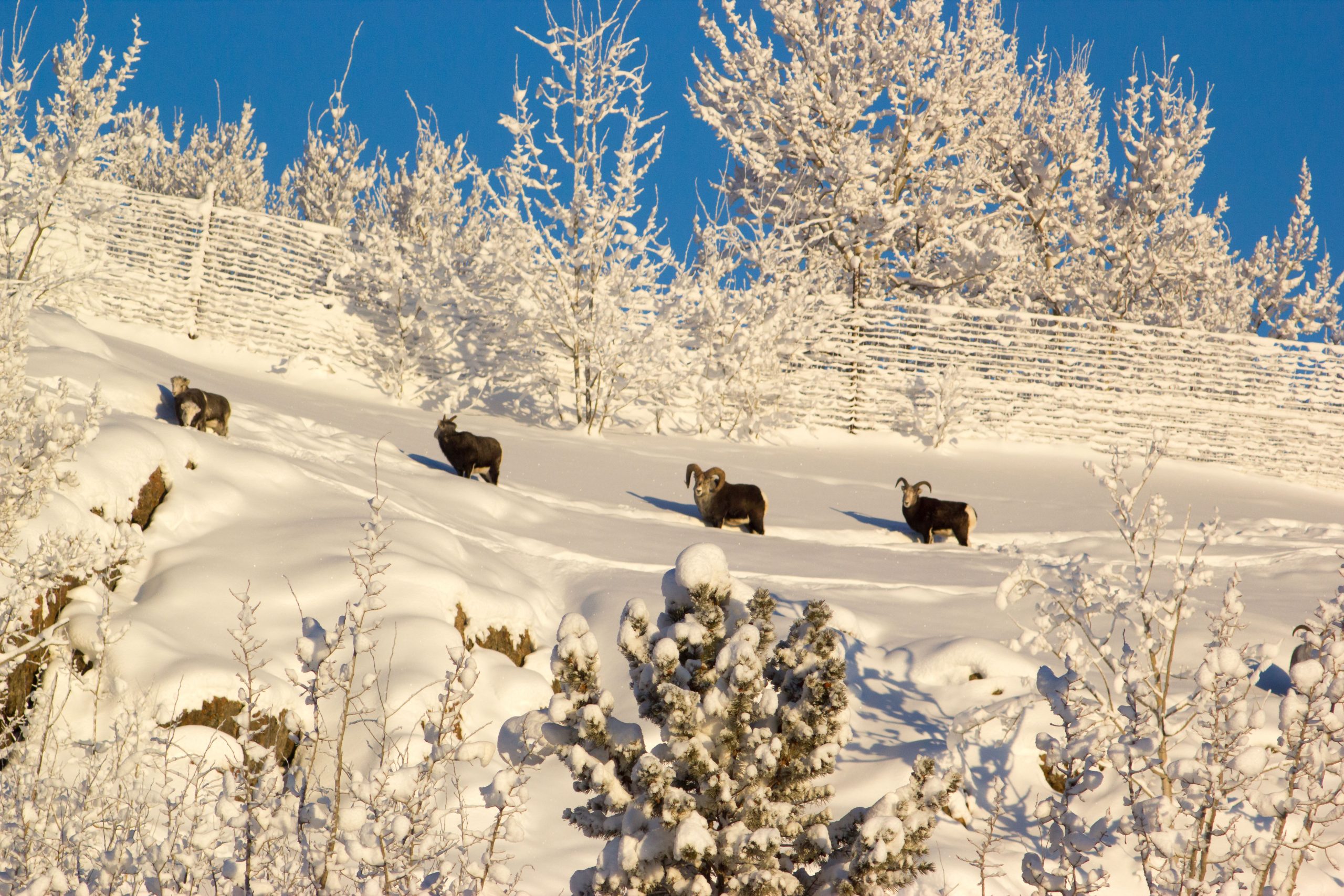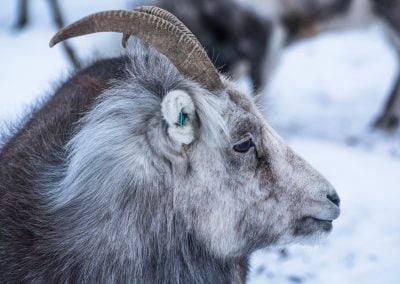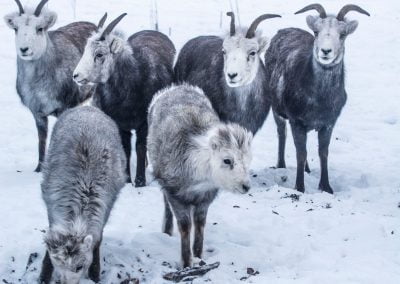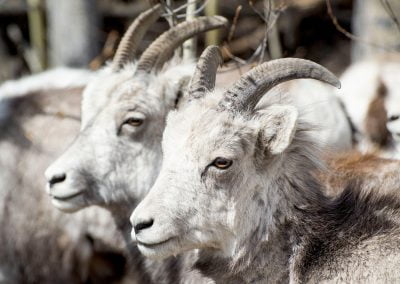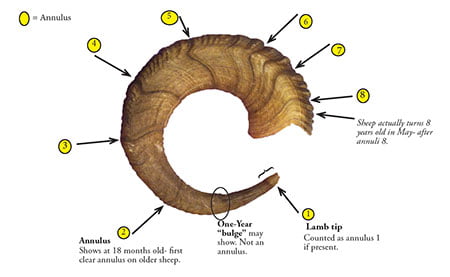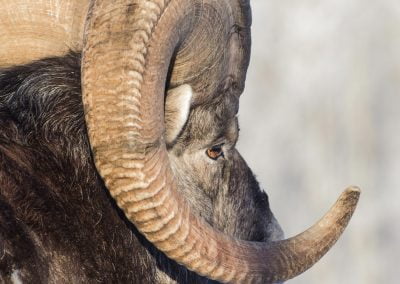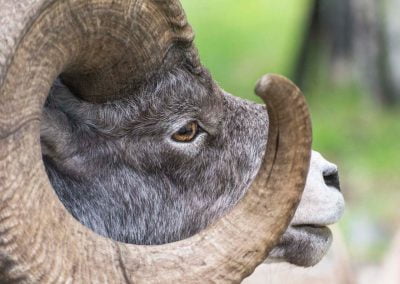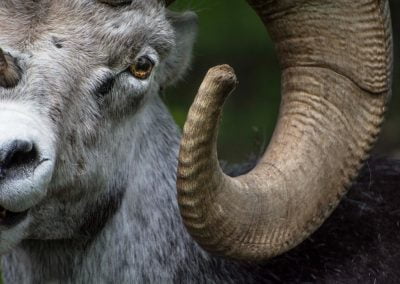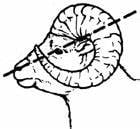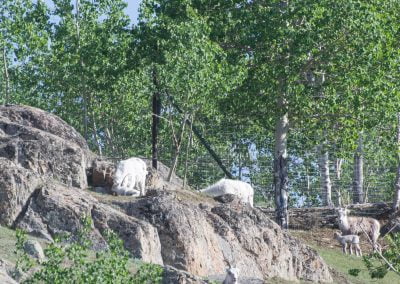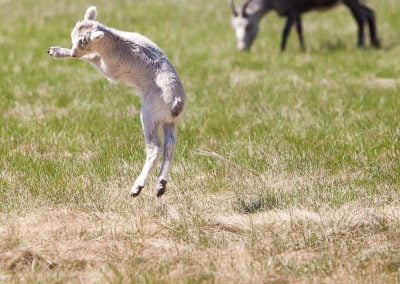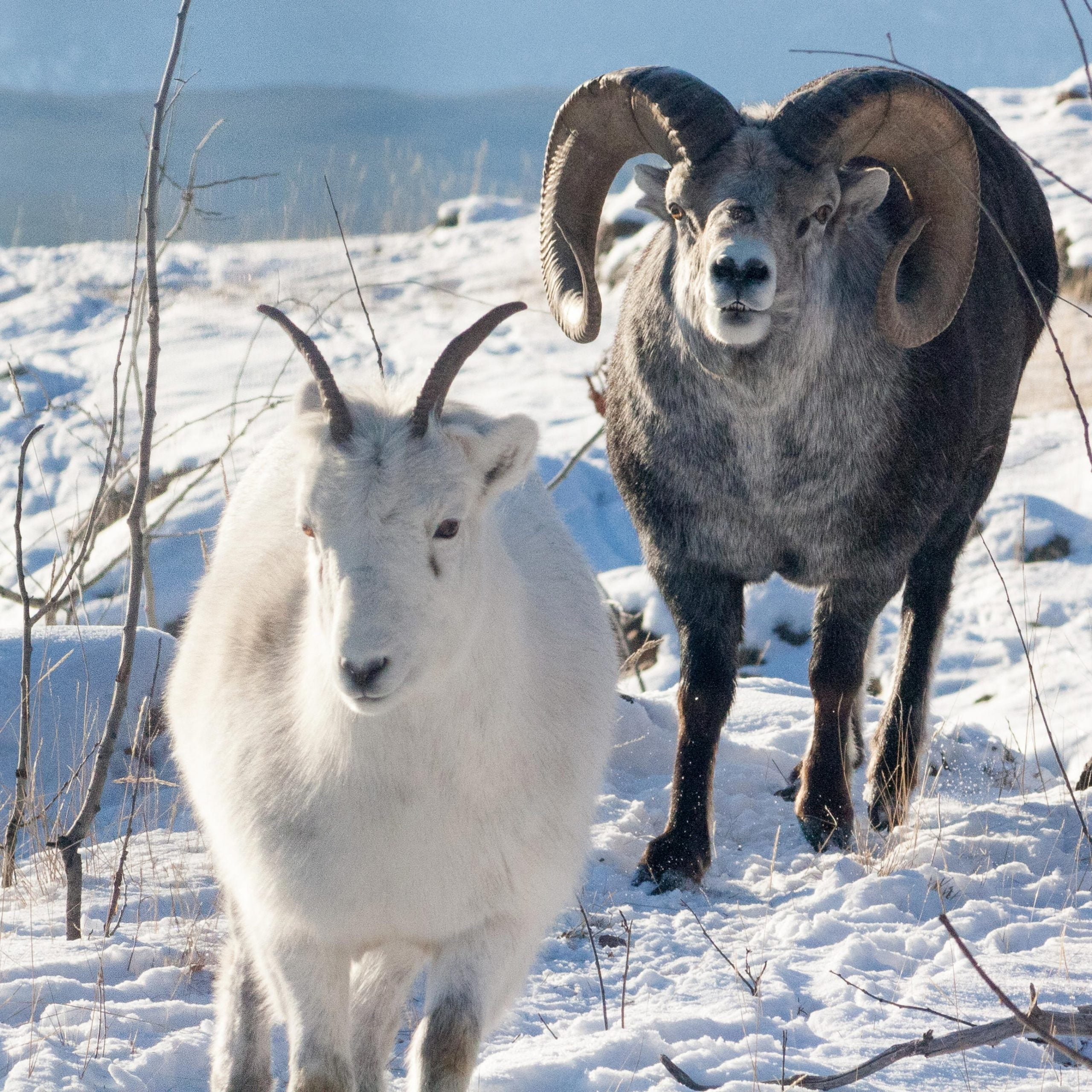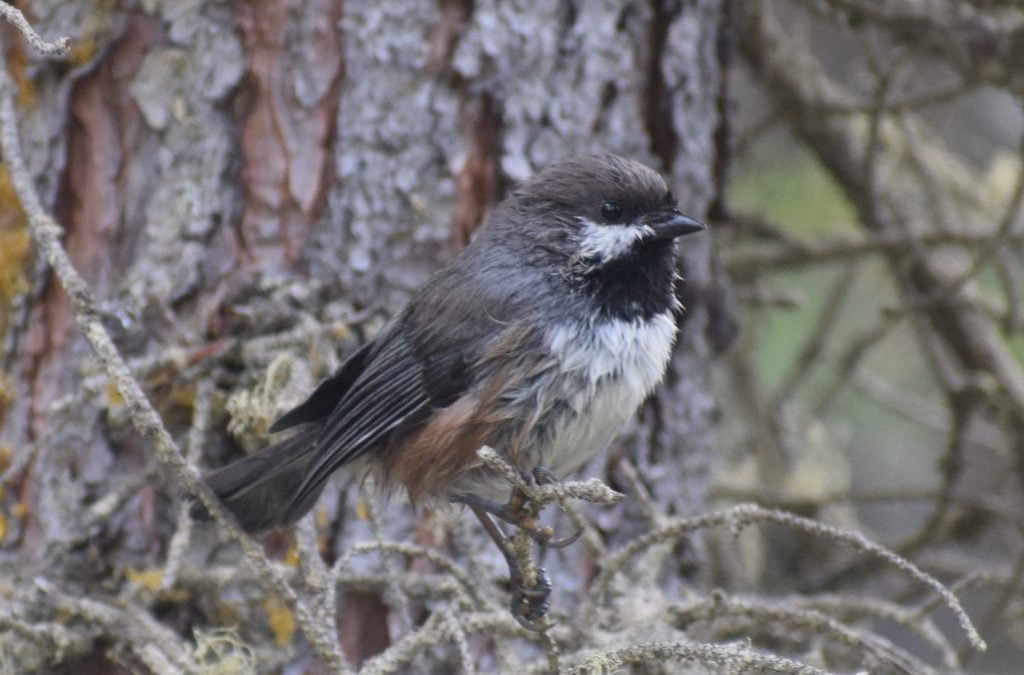
I Wish I Was as Tough as a Chickadee!
I Wish I Was as Tough as a Chickadee!
6 minute read – Banner image photo credit: Syd Cannings, iNaturalist
Gram for gram, there are few creatures in the North that have the endurance, temerity and constitution equal to a Boreal Chickadee. An iconic small bird of the north, this species lives its entire life in the Boreal forest and does not migrate to warmer southern climates in the winter months. Chickadees have adapted to not only survive, but to thrive in harsh winter conditions known across this northern biome.
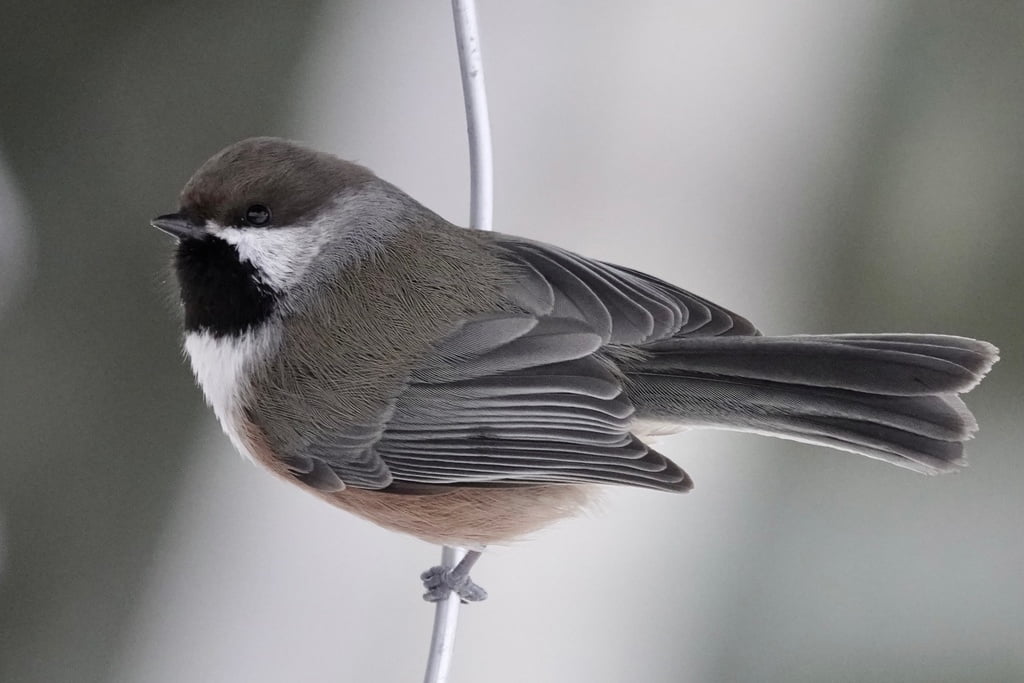
Photo Credit: Cameron D Eckert iNaturalist
For hundreds of thousands of years Boreal Chickadees, a cousin of the Black-capped varieties, has called the upper lands of North America home. It is believed to have crossed the Bering land bridge from present-day Russia into North America, very much like the first humans and many animal species to arrive in the Americas.
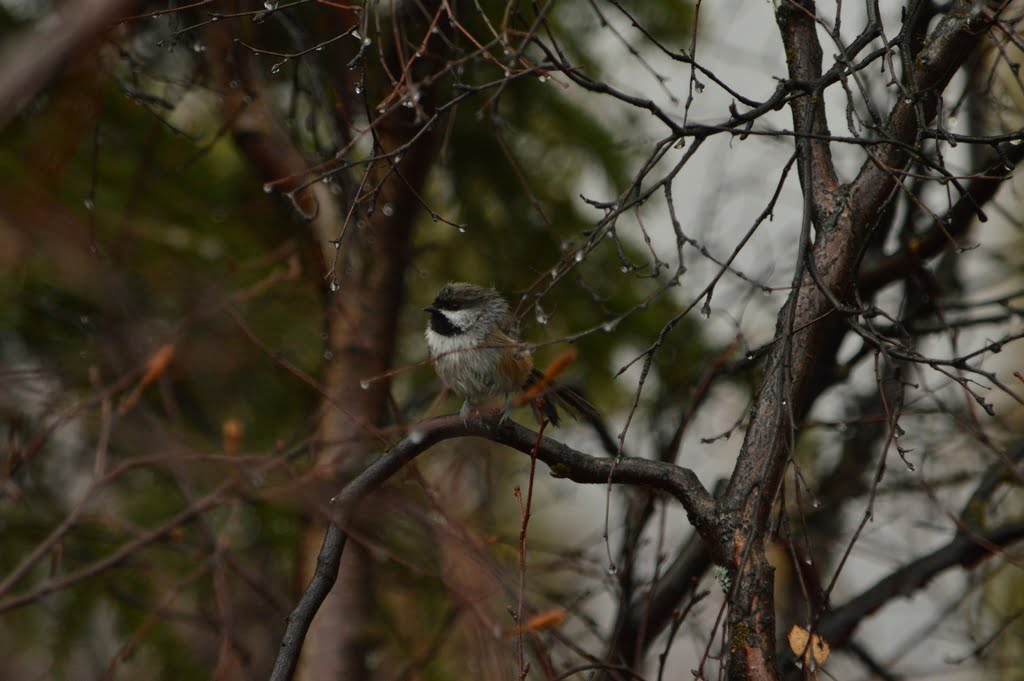
Photo Credit: James Logan iNaturalist
A secret to the Chickadee’s success is its work ethic where much of the summer is spent gathering and storing food, in the form of insects and their larva; seeds of many varieties and fat often gathered from animal carcases killed by much larger predators. Chickadees are frequent participants in cleaning up the remains of other animals as they can eat and digest just about anything organic.
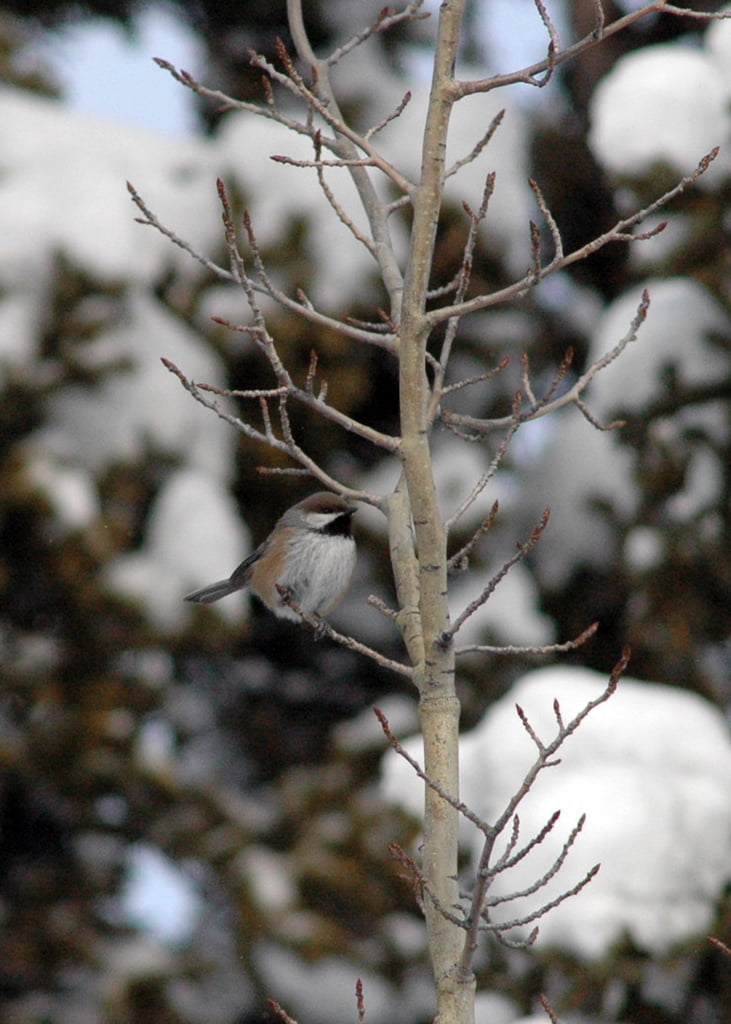
Photo Credit: Mark Oliver, iNaturalist
They cache their winter larder in the bark and crevasses of trees, in tree cavities and roots, rock faces and structures. They demonstrate a very reliable memory for where they hid these morsels as some weeks later they return and consume them, often retrieved from beneath snow cover.1https://www.hww.ca/en/wildlife/birds/chickadee.html
A very social bird, the Boreal Chickadee is often found in the company of its cousins the Black-capped variety, Nuthatches, Pine Siskins, Red Polls, Kinglets and other regular visitors to bird feeders in the back yard. Their cheerful call is very recognizable and can often be heard following an insect hatch when their food gathering activities stimulate greater activity.
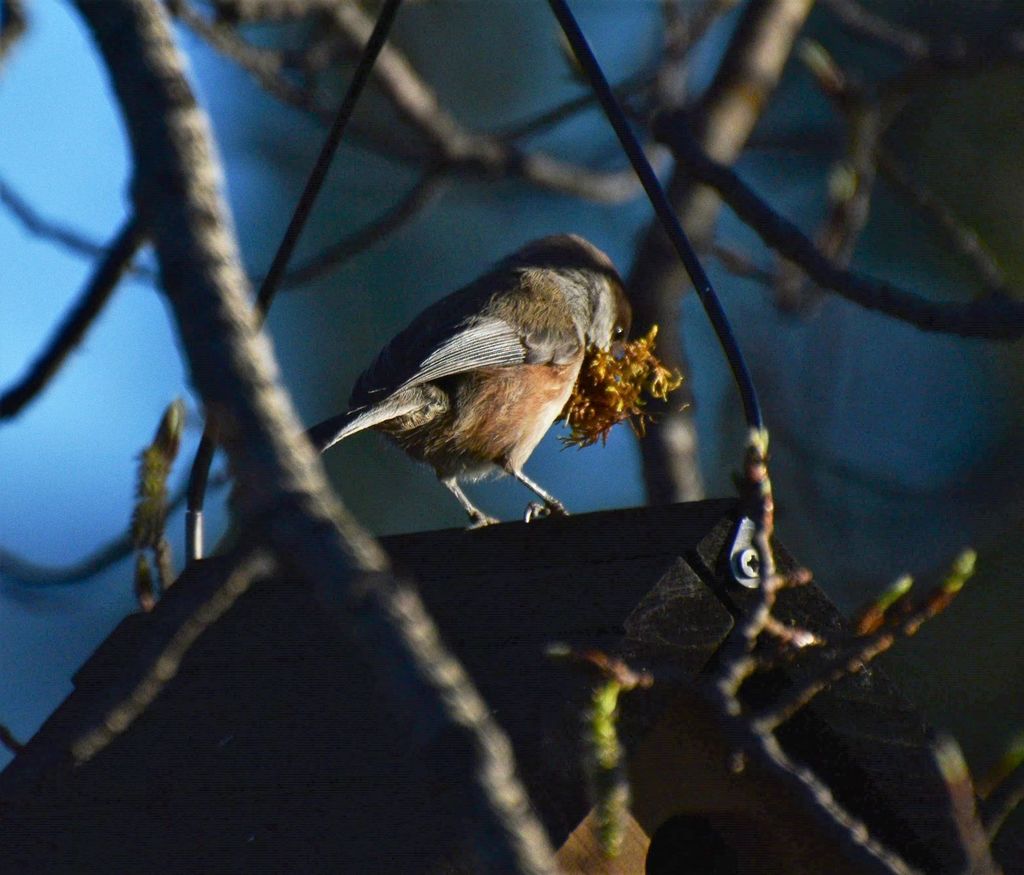
Photo Credit: Yukon Steve, iNaturalist
It is believed that Boreal Chickadees mate for life with the pair remaining together all year. The nest site is often a hole in a tree, either a natural cavity or old woodpecker hole; chickadees may also excavate their own site or enlarge an existing hole. The nest site is usually low, within twelve feet above the ground. Both male and female help with excavation, but only the female builds the nest inside. Nest has a foundation of moss, bark strips, lichens, topped with: feathers, plant seed fluff and the fur and hair shed by local animals. In human occupied locations, nests have been found to contain clothes dryer lint, threads and strings and similar items useful for the purpose.

This is a Boreal Chickadee’s cousin, the Blackcapped Chickadee making a nest in the spring of 2020. Watch the Wild Spring Adventures video for the action of this busy bird and other spring happenings at the Preserve.
After breeding, the hen will lay up to nine eggs in a single clutch. These are white, with fine reddish brown dots often concentrated at the egg’s larger end. Only the female sits to incubate the eggs which take between ten and fifteen days to hatch. The male captures food and brings it to the brooding female during incubation. The female stays with the young and broods them much of the time at first, while the male continues to bring food. Growing quickly and developing flight feathers within a week of hatching, the young leave nest at about 20 days.
As summer concludes and the fall winds blow through the trees, Chickadees put on fresh, heavier plumage. And their feathers are more dense than most birds’, creating a comfy down parka for the chickadee. And most impressive, the chickadees adapt to deep cold by lowering their body temperature at night from 42 degrees Celsius to just 29.5 degrees. In this way, the birds conserve their stores of insulating fat as their metabolism slows. They fluff their feathers up so they truly look like little balls of fluff capturing more body heat within the airspace created within their feathery parka.
An average Boreal Chickadee weighs only a third of an ounce and its body size – without all the fluffy feathers – is about as big as an adult human’s thumb. It truly is remarkable how a creature this small and delicate can endure the harsh frigid cold of a six-month Yukon winter.
Each year the local Yukon Bird Club does several outtings and observations including a the winter seasonal Christmas Bird Count across the Territory – several variety of chickadee are noted to withstand Yukon winters! It’s an excellent citizen science engagement that contributes to a North American wide bird monitoring and conservation program. The Preserve boasts an array of species for bird lovers year-round but especially in Spring migration and throughout summer.
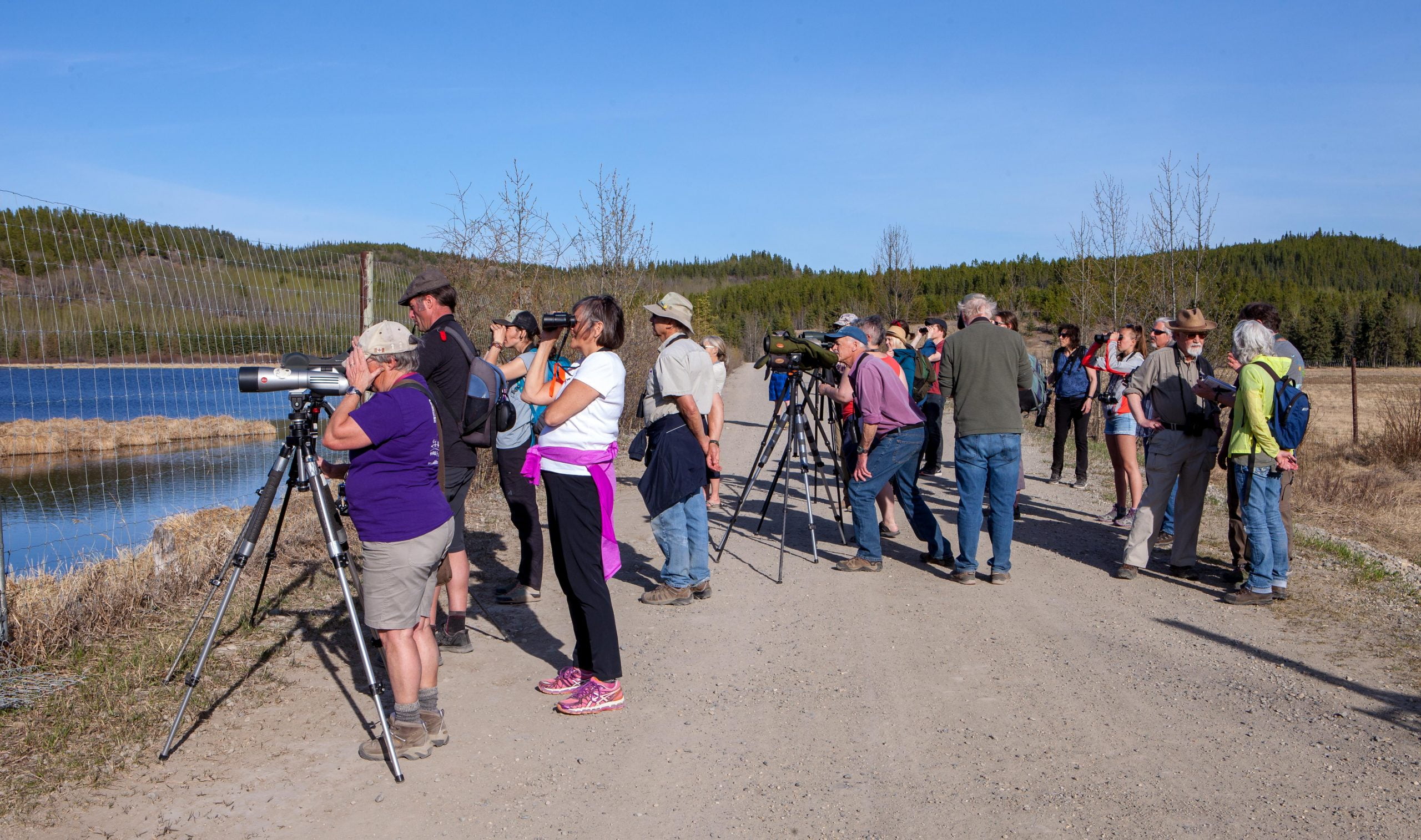
Annual Spring bird walk at the Yukon Wildlife Preserve.
Photo Credit: Jake Paleczny.
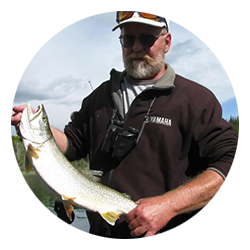
Doug Caldwell
Wildlife Interpreter
Doug is one of the Interpretive Wildlife Guides here at the Preserve. An avid angler and hunter he has a broad knowledge of Yukon’s wilderness and the creatures that live here. With a focus on the young visitors to the Preserve, Doug takes the extra time to help our guests to better appreciate the many wonders of the animal kingdom here in the Yukon.





